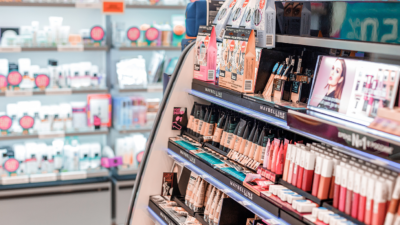It has been quite a year for tenants and landlords as the retail industry resets after a stifling 18 months of uncertainty. Retailers have finally embraced omnichannel as the strategy of record, investing in online and mobile solutions. As more progressive brands keep a watchful eye on Alibaba, we predict new and existing technologies like artificial intelligence (AI) and machine learning to play a more prominent role in 2020.
Building A Culture of Connectivity
According to Eggplant Automation, more than one-third of retailers (34%) are looking to incorporate AI to improve the digital experience and 70% have already deployed AI to test their software and applications. The continuous aggregation of data by retailers will provide clarity on consumer behavior, informing marketing and merchandising decisions.
“Advertising to get customers’ attention and then having in-store experiences will help solidify sales. One major influence will be how companies connect with customers through social media to bring them into stores for purchases. Consumers live on their phones and retailers who market through this medium will drive sales both online and in-store,” shares Emalia Pietsch, vice president of Retail Services, Colliers Honolulu.
“Currently, 90% of retail shoppers use their smartphones in stores, creating a direct connection between retailers and consumers. Beacon technology is expected to surge by 45.5% over the next five years. The small inexpensive, wireless transmitters use low energy Bluetooth technology to transmit signals to nearby compatible smart devices. The emergence of Beacon technology will implement even more connectivity between consumers and locations, allowing companies to learn what products consumers are drawn to, what direction they’re coming from, where in-store they spend the most time, and how long they shop,” said Saira Mohan, principal, Saira Group Chicago.
The Survival of the Fittest
High-end luxury retail brands continue to perform thanks to the personalized, hands-on experience they provide consumers. Douglas Sayer, president/CEO of Colliers Philadelphia asserts, “Successful high-end retailers will continue to do well as they cater to a specific limited demographic who are less apt to buy their luxury items online and prefer to see and touch before purchasing.”
Upon establishing a physical presence, direct-to-consumer brands create valuable and impactful experiences for consumers. And it enhances their online sales, too: Direct-to-consumer brands have seen online traffic jump nearly 37% after opening a physical store. “Direct-to-consumer brands continue to open brick-and-mortar stores with great success, as seen by strong sales and increased brand awareness,” said Thomas Citron, executive managing director of Colliers New York.
Mixed-Use Anchors
Landlords have also experienced a hard reset, broadening the scope of their tenant mix to include brands and retailers that generate foot traffic, engagement and are more adaptable to change. “The stress in the mall sector appears to be moving up the food chain. As the dust settles, we’ll see non-traditional anchors — apartments, hotels, senior housing, medical, entertainment, ball fields, etc. — increase in velocity. We are seeing additional redevelopment across the sector, increasing the social and community components of the property with food truck events, live music, open seasonal markets, among others,” said Chris Seelig, senior vice president of Colliers Cleveland. Citron concurs, “Food and beverage, as well as fitness and entertainment uses, have continued to be active, increasing the category’s footprints throughout the NYC retail submarkets.”
The Convenience of Delivery
The existing infrastructure that supports delivery options is changing at a rapid pace. How retailers respond to customer demand for the immediate distribution of goods will continue to be a major influence on the e-commerce experience. “We will see brands expanding their online catalog by adding SKUs to create additional options for consumers to stay loyal. Capital allocation by brands to strengthen e-commerce focusing on same-day delivery and the convenience of in-store pick-up or home delivery by the consumer will be critical to their survival,” shares Anjee Solanki, national director of Retail Services, Colliers San Francisco.
Future Outlook
The U.S. economic growth relies heavily on consumer attitudes and buying intentions. As the U.S. GDP slowly regains momentum, we have seen a slight increase in consumer spending (2.9%), including a 5.5% increase in spending on goods. There is much speculation on how the state of the elections may influence consumer decision-making, impacting CRE and retail in the new year. “It’s unclear how the 2020 presidential election may affect CRE. When you consider the sales year over year, things are as good as they can be, and hopefully, will be no worse after the election,” said Chris Irwin, senior vice president, Colliers Chicago. “As for the rest of it, we’ll have to wait and see.”
About the author:
Anjee continues to be an insatiable enthusiast of all things retail. She’s a student of culture with a pulse on future shoppers and the fleeting trends constantly changing the retail landscape … driving retailers, landlords and developers crazy!

 Anjee Solanki
Anjee Solanki
 Nicole Larson
Nicole Larson
